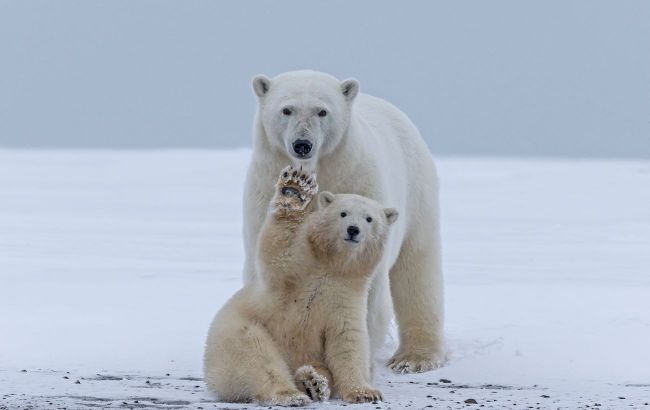Why polar bears don't freeze in extreme cold: Scientific facts you didn't know
 What helps polar bears survive in severe frost (photo: Getty Images)
What helps polar bears survive in severe frost (photo: Getty Images)
Polar bears are unique animals that are able to survive in the extreme conditions of the Arctic. They naturally have several features that can be the envy of both other animals and humans.
Thick undercoat and waterproof fur
One of the unique features of polar bears is their special fur. They have a double layer: a thick undercoat that retains heat and a longer outer layer that is waterproof. This fur not only protects against the cold but also allows bears to swim in icy water without losing heat.
Thick layer of fat
Polar bears have a thick layer of fat under their skin that serves as insulation and energy storage. This fat helps them maintain a stable body temperature even in the coldest winters. Bears can feed on this fat for long periods of time when hunting is not possible.
Scientists have chemically analyzed the sebum of polar bears and found cholesterol, diacylglycerols, and fatty acids. This mixture prevents ice from sticking to the fur, which provides protection against glaciation.
By the way, scientists have recently developed the formula for this fat to create new technologies with ice protection.
Black skin to absorb heat
Despite the white color of their fur, polar bears have black skin. This allows them to absorb the sun's heat, which is especially important in the Arctic, where sunlight can be limited.
Slow metabolism
Polar bears have a slow metabolism, which allows them to save energy. This is especially useful during periods when food is limited. Their bodies can efficiently use even small amounts of food to maintain their vital functions.
Adapted paws
Polar bears' feet are adapted for walking on ice and snow. They have large, partially fused toes that act like snowshoes, distributing body weight and preventing them from sinking into the snow. The paws also have small rubber-like growths that prevent slipping on ice.
Hunting and nutrition
Polar bears are carnivores that feed mainly on seals. They have a keen sense of smell that allows them to locate seals under a layer of ice. This ability is crucial for their survival, as seals are the main source of food in the Arctic environment.
Behavioral adaptations
Polar bears can reduce their activity when weather conditions are too severe. They may bury themselves in the snow or use natural shelters to reduce heat loss. This strategy allows them to conserve energy and stay warm.
Earlier, we wrote that a scientist has named a living creature that can build the next civilization.
Sources: Polar Bears International, National Geographic, WWF, Science.

